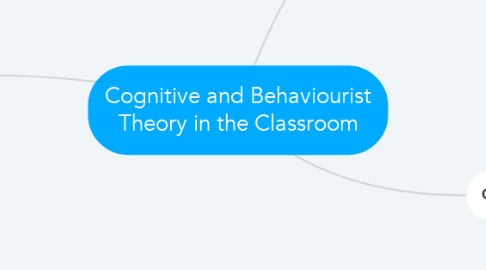
1. Instructional Deleivery
1.1. Project-Based
1.1.1. Students are encouraged to choose projects that help them learn authentically, answering real-life problems and challenges.
1.1.1.1. I act as a guide, helping students learn the desired content and work toward the desired outcomes on their own.
1.1.1.1.1. Cognitive
1.2. Experiential
1.2.1. Our class values learning through hands on experience through our projects, community involvements, and experiential outings.
1.2.1.1. Learning is our classroom is largely internal and often a transformation of students' prior knowledge.
1.2.1.1.1. Cognitive
1.3. Student-Led
1.3.1. Students take the lead in their learning, choosing projects that they are passionate about and helping to create their own assessments.
1.3.1.1. Focuses on real world examples, problem solving, and building on and expanding existing knowledge. Learners’ thoughts, beliefs, attitudes, and values are also considered to be influential in the learning process (Winne, 1985).
1.3.1.1.1. Cognitive
2. Although there are some behaviourist elements to my teaching, my classroom mostly follows cognitive theory, as I believe learning should predominantly be an active process where students are constantly creating knew knowledge. The fact that I have a small class size and very little oversight allows be the freedom to follow the teaching path that I believe in. Were my class size to get particularly large or more oversight to be instituted, I may have to reevaluate my methods.
3. Conclusion
4. Lesson Planning
4.1. Emergent Curriculum
4.1.1. In lesson planning for emergent curriculum, I take the interests that have sparked in my students to help create units of study, plan field trips, and invite classroom speakers.
4.1.1.1. This takes into account what the learner already knows and gives them the tools to learned more on the desired subject.
4.1.1.1.1. Cognative
4.2. Mandated Testing
4.2.1. Although we mostly have a student-led classroom, we do have some mandated teaching and have a minimal amount of lesson planning that is specifically "teaching to the test"
4.2.1.1. In this area, I lean toward the behaviourist, in the interest of efficiency. Students use programs that assess their knowledge and build on their skills through drills for mastery learning, particularly in math and English grammar. "Learning is accomplished when a proper response is demonstrated following the presentation of a specific environmental stimulus" (Ertmer and Newby, 2013).
4.2.1.1.1. Behaviourist
4.3. Learning Centres
4.3.1. I plan out specific learning centres to engage students. Some activities are directed, some open-ended, some independent, some guided.
4.3.1.1. Activities are designed to assess students prior knowledge and build on it, stressing more complex cognitive processes (Snelbecker, 1983).
5. Classroom Management
5.1. Classroom Guidelines
5.1.1. I work together with students to create the expected classroom behaviours and consequences.
5.1.1.1. Although there is a model of shared control in the classroom, including while creating classroom guidelines, there is a large behaviourist element and there are clearly defined consequences and rewards for pre-determined behaviours.
5.1.1.1.1. Behaviourist
5.2. Physical Environment
5.2.1. I plan an environment rich in resources, conducive to 21st century skills, and designed for student-lead, project-based learning.
5.2.1.1. Our learning stations encourage students to explore, create, ask questions, and construct new knowledge.
5.2.1.1.1. Cognitive
5.3. Time Management
5.3.1. With the exception of outings, classroom speakers, and the occasional scheduled assignment, student's time is their own.
5.3.1.1. Learning is active and follows the direction of the learner, with much of the focus on the internal learning process.
5.3.1.1.1. Cognitive
